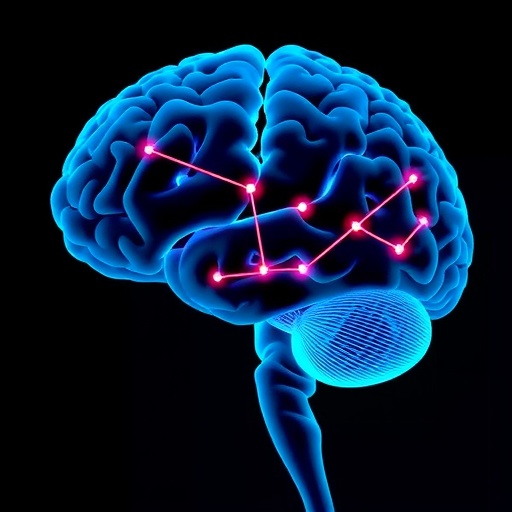A groundbreaking study from Houston Methodist has unveiled a novel dimension to Alzheimer’s disease, revealing its disturbing influence on the body’s metabolic regulation by impairing critical neurovascular communication in adipose tissue. Traditionally recognized for its devastating effects on cognition and memory, Alzheimer’s disease now emerges as a systemic disorder with far-reaching consequences beyond the brain. This revolutionary research elucidates how Alzheimer’s interrupts the intricate signaling pathways between nerves and blood vessels within fat tissue, potentially exacerbating cardiovascular and metabolic disorders such as stroke, heart disease, and diabetes.
The study, titled “Alzheimer’s disease disrupts intra-adipose neurovascular contact,” was recently published in the prestigious Journal of Lipid Research. It represents a pioneering exploration into the autonomic nervous system dysfunction caused by Alzheimer’s, extending well beyond the central nervous system to peripheral tissues. Dr. Stephen T. Wong, the John S. Dunn Presidential Distinguished Chair in Biomedical Engineering at Houston Methodist, spearheaded this multi-disciplinary endeavor. Collaborators include Dr. Li Yang and Dr. Jianting Sheng, whose expertise in computational biology and radiology was instrumental in advancing the high-resolution imaging and analytical techniques underpinning these findings.
Utilizing state-of-the-art three-dimensional imaging modalities, the researchers meticulously examined the architecture of neurovascular bundles embedded within adipose tissue of murine models genetically engineered to mimic Alzheimer’s pathology. This meticulous approach allowed unprecedented visualization of the sympathetic nerves and vascular structures essential for metabolic regulation. The neurovascular interface in adipose tissue orchestrates vital communication signals involving hormonal and neural pathways that govern lipid metabolism, energy balance, and systemic homeostasis.
The investigation demonstrated a striking disruption in this sophisticated neurovascular network among subjects exhibiting Alzheimer-like conditions. Specifically, the innervation of fat tissue by sympathetic nerves was markedly reduced, while the integrity of blood vessel connections displayed significant deteriorations. Such structural impairments compromise the adipose tissue’s ability to respond to metabolic demands, including energy expenditure and lipid mobilization. This insight unveils a mechanistic link between neurodegeneration and metabolic dysregulation hitherto unexplored.
Dr. Li Yang emphasized the metabolic consequences of these findings, noting that “disruption of nerve-vessel crosstalk within adipose tissue could severely impair the body’s energy management capabilities.” The loss of sympathetic nerve influence not only diminishes the regulation of lipolysis and thermogenesis but also may precipitate insulin resistance and systemic inflammation. These dysregulated metabolic pathways contribute to the heightened incidence of cardiovascular complications commonly observed in patients with Alzheimer’s disease.
This research provides a compelling explanation for the alarming co-prevalence of Alzheimer’s with vascular and metabolic comorbidities, such as stroke, hypertension, and type 2 diabetes. The compromised autonomic control arising from neurovascular damage in adipose tissue could underlie these multifaceted health challenges, amplifying disease severity. Moreover, these factors are known to exacerbate cognitive decline, suggesting a vicious cycle between neurodegeneration and systemic metabolic dysfunction.
Importantly, the study opens exciting avenues for therapeutic innovation. By targeting autonomic nervous system dysfunction outside the brain, novel treatments may be developed that not only mitigate cognitive symptoms but also prevent or reverse metabolic derangements. Dr. Wong and Dr. Sheng highlight that “addressing the peripheral autonomic impairments presents a promising strategy to improve overall health outcomes for individuals affected by Alzheimer’s.” Future drug development and clinical interventions could harness this knowledge to design integrative therapies.
The utilization of cutting-edge computational biology enabled quantitative assessments of neurovascular disruptions, allowing the researchers to map the progression of autonomic impairment throughout disease development. This quantitative framework sets the stage for longitudinal studies that could monitor therapy responses in real time, providing biomarkers for early detection and treatment efficacy. These technological advancements are poised to transform the landscape of Alzheimer’s research by integrating systemic metabolic health with neurological outcomes.
From a broader perspective, these findings challenge the traditional neuron-centric view of Alzheimer’s and emphasize the disease’s systemic impact. Recognizing Alzheimer’s as a disorder that induces peripheral autonomic pathology compels the medical community to adopt a holistic approach in diagnosis and management. Considering metabolic health and vascular integrity as integral components of Alzheimer’s treatment protocols could drastically improve patient quality of life and survival rates.
Furthermore, the study underscores the critical role of adipose tissue as an active neuro-metabolic organ rather than a passive fat reservoir. Adipose tissue’s rich innervation and vascularization allow it to act as a dynamic interface coordinating autonomic inputs and systemic metabolic responses. Understanding how neurodegenerative diseases disrupt this interface offers profound implications for multiple fields, including endocrinology, cardiovascular medicine, and neurology.
In conclusion, the research conducted by Houston Methodist illuminates a vital nexus between Alzheimer’s disease and systemic metabolic dysfunction mediated through neurovascular disruption in adipose tissue. This novel insight not only deepens our understanding of the disease’s complexity but also paves the way for innovative diagnostic and therapeutic strategies that transcend the brain. By bridging the gap between neurodegeneration and peripheral metabolic regulation, this study marks a significant milestone in combating one of the most challenging health crises of our time.
For more details about Houston Methodist and ongoing research initiatives, interested readers can explore their extensive newsroom and social media platforms, including X, Facebook, LinkedIn, Instagram, TikTok, as well as their On Health and Leading Medicine blogs. These channels provide continuous updates on cutting-edge medical research and clinical developments shaping the future of medicine.
Subject of Research: Animals
Article Title: Alzheimer’s disease disrupts intra-adipose neurovascular contact
News Publication Date: 25-Oct-2025
Web References: http://dx.doi.org/10.1016/j.jlr.2025.100886
References: Wong, S.T., Yang, L., Sheng, J. et al. Alzheimer’s disease disrupts intra-adipose neurovascular contact. Journal of Lipid Research (2025). DOI: 10.1016/j.jlr.2025.100886
Keywords: Alzheimer disease, Neurodegenerative diseases, Diabetes, Obesity, Cardiovascular disorders, Cardiovascular disease, Hypertension, Metabolic disorders




